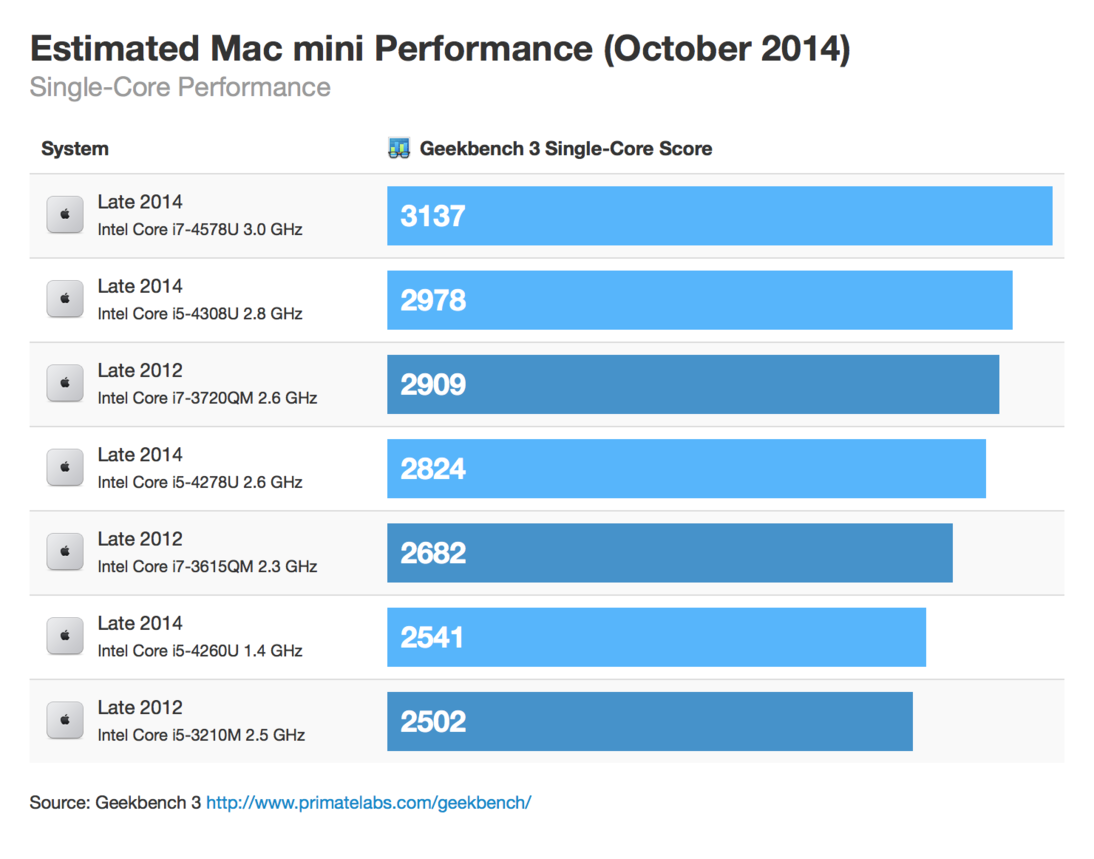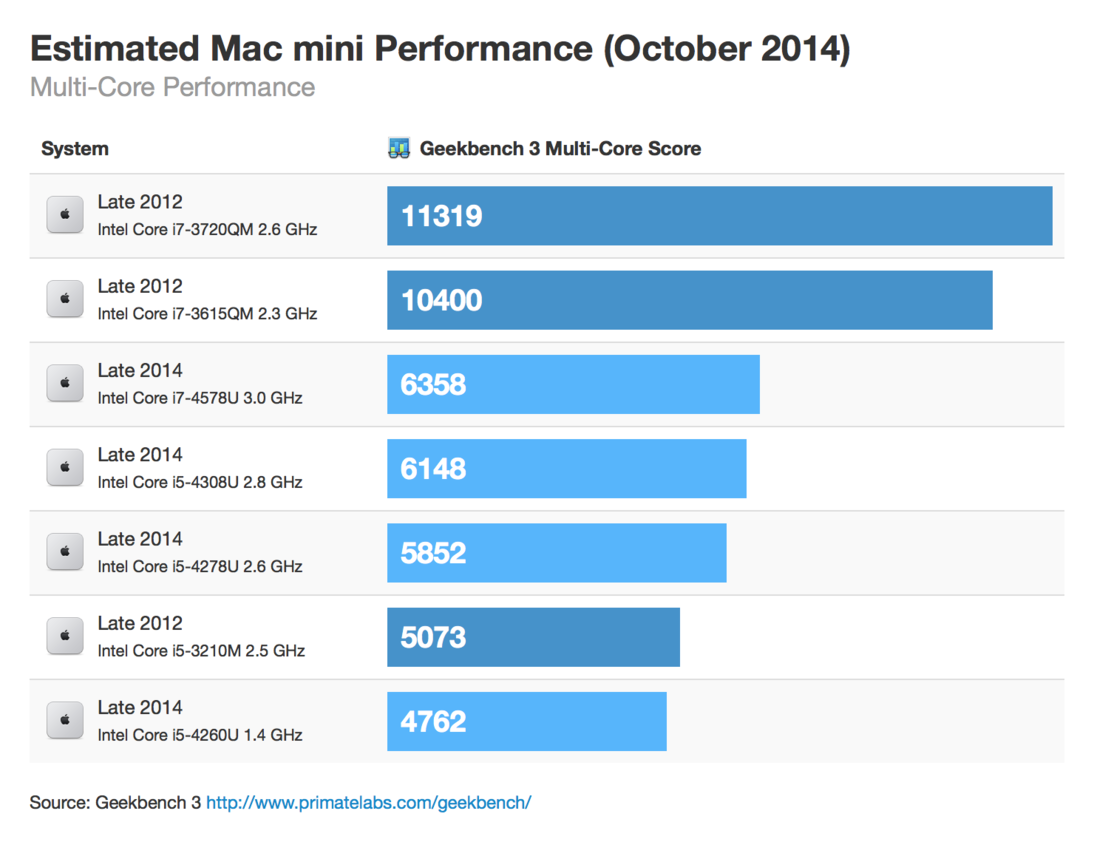Apple announced a long-awaited update to the Mac mini lineup on Thursday. Along with 802.11ac Wi-Fi and PCI-based flash storage options the new models feature Intel's Haswell processors. While Apple hasn't identified which Haswell processors they're using in the new lineup, I believe these are the processors Apple is using based on the Mac mini specifications published by Apple:
| Processor | Cores | Frequency | Turbo Boost |
|---|---|---|---|
| Core i5-4260U | 2 | 1.4 GHz | 2.7 GHz |
| Core i5-4278U | 2 | 2.6 GHz | 3.1 GHz |
| Core i5-4308U | 2 | 2.8 GHz | 3.3 GHz |
| Core i7-4578U | 2 | 3.0 GHz | 3.5 GHz |
For comparison, here are the Haswell processors from the "Late 2014" lineup alongside the Ivy Bridge processors from the equivalent model in the "Late 2012" lineup:
| Late 2014 | Late 2012 | |||
|---|---|---|---|---|
| Configuration | Processor | Cores | Processor | Cores |
| Good | Core i5-4260U | 2 | Core i5-3210M | 2 |
| Better | Core i5-4278U | 2 | Core i7-3615QM | 4 |
| Best | Core i5-4308U | 2 | Core i7-3615QM | 4 |
| BTO | Core i7-4578U | 2 | Core i7-3720QM | 4 |
From the table you can see Apple has moved from dual- and quad-core processors in the "Late 2012" lineup to dual-core processors across the entire "Late 2014" lineup. How much this change will affect multi-core performance? Will the new Mac minis be slower than the old Mac minis?
Unfortunately there are no Geekbench results for the new Mac minis in the Geekbench Browser to help us answer this question. Instead, I estimated the new Mac minis' scores by using data from other systems with the same processor. I expect the estimated scores will be within 5% of the actual scores for the Mac minis.
Here are the estimated scores for the "Late 2014" Mac minis alongside the actual scores for the "Late 2012" Mac minis:
Single-core performance has increased slightly from 2% to 8% between the "Late 2012" and "Late 2014" models. This increase is in line with what we saw when other Macs models moved from Ivy Bridge to Haswell processors.
Unlike single-core performance multi-core performance has decreased significantly. The "Good" model (which has a dual-core processor in both lineups) is down 7%. The other models (which have a dual-core processor in the "Late 2014" lineup but a quad-core processor in the "Late 2012" lineup) is down from 70% to 80%.
So why did Apple switch to dual-core processors in the "Late 2014" lineup? The only technical reason I can think of is that the Haswell dual-core processors use one socket (that is, the physical interface between the processor and the logic board) while the Haswell quad-core processors use different sockets:
| Processor | Cores | Graphics | Socket |
|---|---|---|---|
| Core i7-4578U | 2 | Iris | FCBGA1168 |
| Core i7-4770HQ | 4 | Iris Pro | FCBGA1364 |
| Core i7-4700MQ | 4 | HD 4600 | FCPGA946 |
Apple would have to design and build two separate logic boards to accommodate both dual-core and quad-core processors. Other Macs use the same logic board across models, so I wouldn't expect Apple to make an exception for the Mac mini. Note that this wasn't an issue with the Sandy Bridge and Ivy Bridge processors, where both dual- and quad-core processors used the same socket.
Apple could have gone quad-core across the the "Late 2014" lineup, but I suspect they wouldn't have been able to include a quad-core processor (let alone one with Iris Pro graphics) and still hit the $499 price point.
All things considered, if you're looking for great multi-core performance in a mini (say if you're using your Mac mini as a server), I have a hard time recommending the new Mac mini. I would suggest trying to track down a "Late 2012" Mac mini rather than buying a new "Late 2014" Mac mini. Otherwise the improved WiFi, graphics, and single-core performance make the new "Late 2014" Mac mini worth considering.

